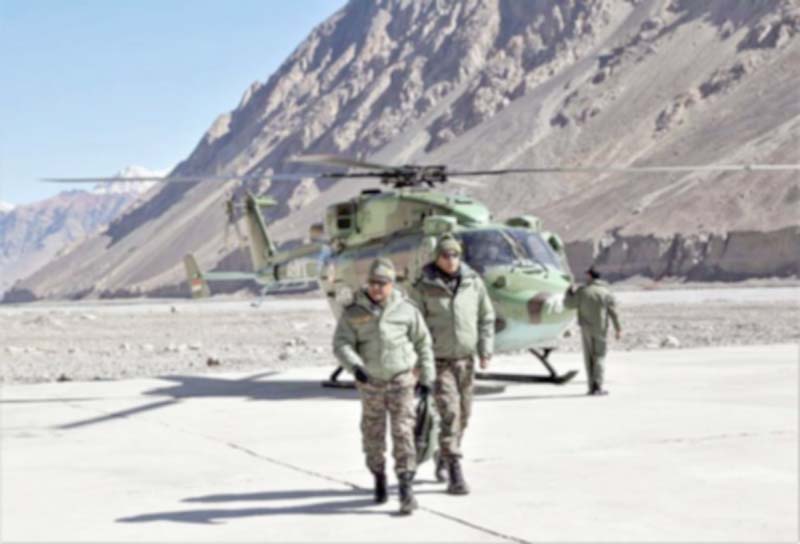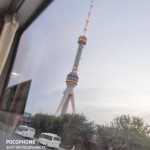By Rashme Sehgal
‘This reluctance to respond forcefully to Chinese PLA provocations and outright aggression has as much to do with Prime Minister Modi personally, as with the institutional mindset of the MEA or even the Indian Army.’ ‘They are scarred by the 1962 War and are still cowed by China.’
Dr. Bharat Karnad, Emeritus Professor at the Centre for Policy Research, the New Delhi-based think-tank, analyses why there has been a muted Indian response to the Galwan clashes which took place between Indian and Chinese troops two years ago. “Let’s be clear: It is Modi, and Modi alone, who is responsible in toto for India’s foreign and military policies. External Affairs Minister S Jaishankar is just the medium and has no say in these matters other than overseeing their conduct and implementation; and army generals have even less of a role,”. Two years after the Galwan clashes, there is an accusation by some analysts that China continues to steadily encroach on Indian Territory and has taken over almost 4,000 km of Indian territory. How far is this assessment correct? Given the 24/7/365 surveillance via various sensors, including those mounted on Indian and friendly foreign satellites, it is unlikely India has lost territory to this extent since the Galwan incident. That said, the 1,000-odd sq kms in the area northeast of the Y-Junction on the Depsang Plain the PLA occupied much before the clashes on the Galwan river remain in China’s possession. A large part of this Chinese deployment has reportedly been in the Depsang Plain. This continues to be a dangerous development given that the Chinese aim to build a connecting road up to PoK. The significance to India of the territory China now occupies is that this traditionally Indian area is alongside the arterial Xinjiang Highway that branches off southwards at the Karakoram Pass to constitute the China-Pakistan Economic Corridor. This territorial loss means the Indian Army is blocked from moving northwards from Daulat Beg Oldi to apply military pressure at the conjunction of the PLA-Pakistan army interests on the Karakoram Pass, and thus threaten the CPEC. This is what the Chinese People’s Liberation Army intended with pre-emptively capturing that swath of land. The Chinese are building another bridge over the Pangong Tso Lake to improve their logistics in countering our troops positioned there. The Chinese plan obviously is to have redundancy in connectivity by building a number of roads, shunts and bridges linking the northern and southern shores of the lake under their control. It enables them to consolidate their logistics infrastructure, and launch a concerted military action on either shore at a moment’s notice. We have had 15 rounds of border commander talks since April 2020, but there is little talk of a reversion of positions to status quo ante pre April 2020 when these talks first started. Analysts believe we are back to the 1959 position. The periodic field commanders’ meetings are a waste of time and of no real account other than affording these uniformed folks some downtime with tea and samosas! I long ago suggested that the Indian Army should not partake of these conferences the PLA does not take seriously. I had warned precisely of such a denouement at the very beginning of this confrontation in eastern Ladakh. It was Pollyanna-ish of the Indian government, in any case, to expect China would ever agree, for any reason, to the restoration of the status quo ante. Why is there no White Paper on these talks providing the public at large details about what was discussed and what were the lessons learnt from the tragic death of our 20 soldiers on the night of June 15-16, 2020? There’s no White Paper because it will have very little to report other than that China has not, and will not, move an inch from their proclaimed 1959 claimline which, by the way, Beijing never formally resiled from. Nor is there any clarity from the government or the army about what led the Chinese army to occupy Indian land. Or is this just a Chinese continuance to continue with their objective of ‘salami slicing’? The PLA is into ‘salami slicing’ of Indian Territory with a definite design (such as blocking Indian access to the Karakoram Pass). Such activity is not purposeless. Why has the government’s response to China been so muted in contrast to the chest thumping that goes on each time something happens along our border with Pakistan? This reluctance to respond forcefully to Chinese PLA provocations and outright aggression has as much to do with Prime Minister Modi personally, as with the institutional mindset of the MEA or even the Indian Army. They are scarred by the 1962 War and are still cowed by China. In retrospect, what exactly was discussed between Prime Minister Modi and President Xi Jinping at their 18 meetings prior to this standoff? Can this be seen as another betrayal by the Chinese as happened in the case of Jawaharlal Nehru in 1962? Look, the Chinese negotiating tactics are always to first delineate the border as per historic claims and then to change the status quo on the ground to conform with those territorial claims. The rest is artful waffling and stretching the negotiation in time and space to hope that the other side loses patience and gives in. Zhou Enlai in the 1950s did offer Nehru a territorial swap — recognition of the McMahon Line in Arunachal Pradesh for Indian acceptance of the Aksai Chin the PLA had built the Xinjiang Highway through. That was not a bad deal for Nehru to have accepted then. He didn’t. Was it a prudent decision to have given up the Kailash Range getting little in return? What is our actual position today in Hot Springs and the Depsang Plain? It was the biggest strategic blunder the Modi regime committed by agreeing to withdraw the Special Frontier Force unit from the heights in exchange for paltry returns — the PLA’s drawing back eastwards a bit from the terrain feature Finger 3 on Pangong Lake’s northern shore. Again I had warned against this unequal deal. Trade with China continues to grow with India hardly being in a position to stop its dependence on Chinese imports. Is there any serious attempt to curtail Chinese imports? Indian imports in trillions of rupees from China are growing by nearly 50% annually, and the repatriation of profits in billions of dollars in hard currency by Chinese companies is keeping pace. It is among the bright spots in the current Chinese economy and something Beijing would not like to disturb. Reason why the PLA is pretty quiet in Ladakh even in the summer military campaign season. Delhi can change this situation in a trice, but percieves Chinese exports to India as negotiating leverage with Xi Jinping, which it is loath to give up. Is it not time for the political leadership to come forward and take charge instead of leaving this issue to the generals especially given the fact that China has changed the goalposts? Let’s be clear: It is Modi, and Modi alone, who is responsible in toto for India’s foreign and military policies. External Affairs Minister S Jaishankar is just the medium and has no say in these matters other than overseeing their conduct and implementation; and army generals have even less of a role.







